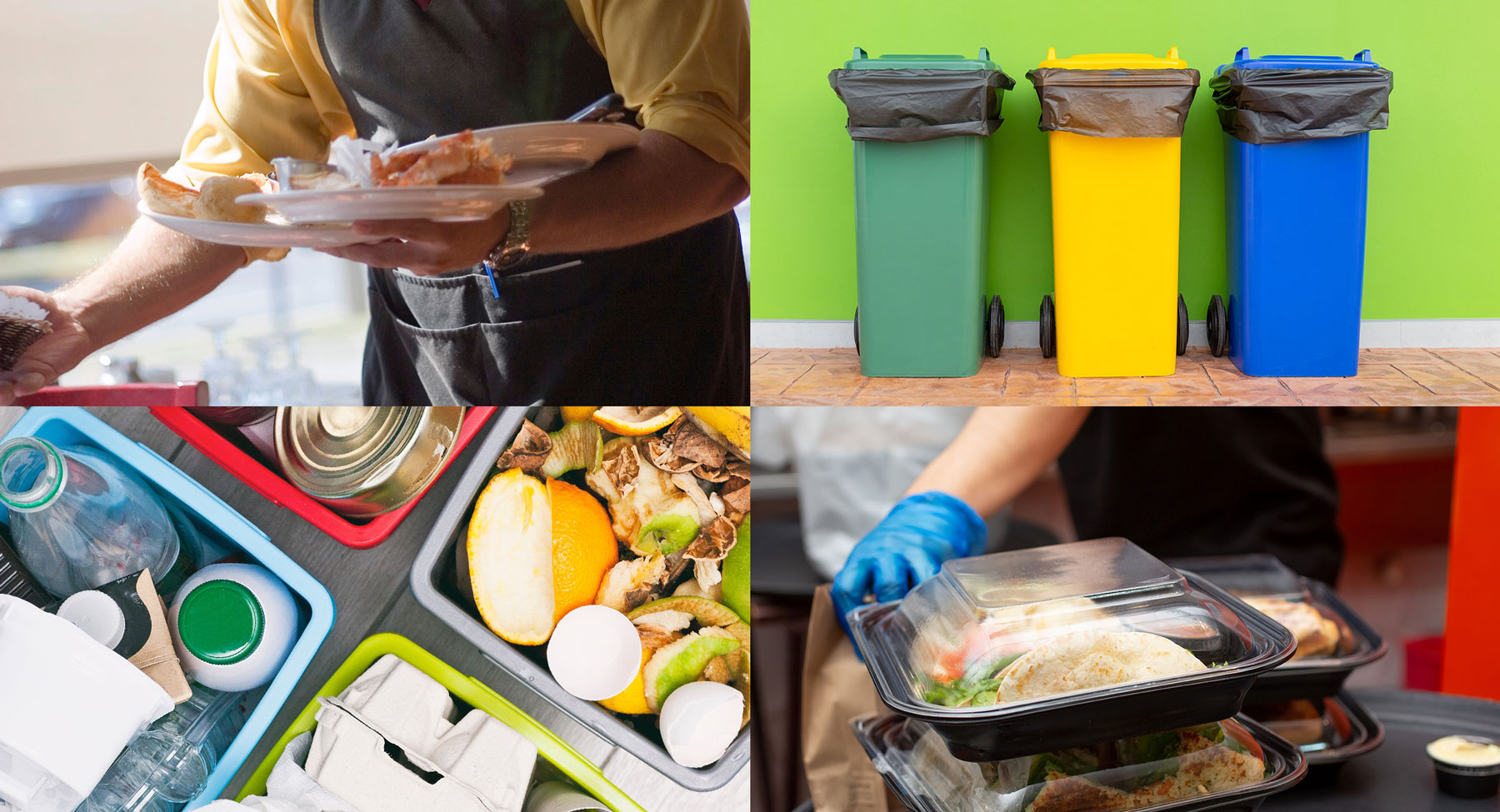Contaminated bins for food scraps are a problem—this new guide shows businesses how to solve it
The New York State Pollution Prevention Institute (NYSP2I)—led by Rochester Institute of Technology’s Golisano Institute for Sustainability—has created a troubleshooting guide to help businesses and institutions address a major barrier to food scraps collection programs: bin contamination.
Bins become contaminated when inorganic material—such as plastic packaging, gloves, hairnets, or service ware—ends up in the bins meant for food scraps. Developed with retail and food service managers in mind, the resource offers practical tips for course-correcting an existing food scraps collection program by addressing common causes of bin contamination.
Easing the learning curve
Most uneaten food—about 40 percent of all food produced in the United States—ends up in a landfill where it decomposes and releases methane, a potent greenhouse gas. Wasted food is a significant contributor to climate change all while more than 2.2 million people are affected by food insecurity in New York State alone. Recognizing these environmental and social impacts, New York’s legislature enacted the Food Donation and Food Scraps Recycling Law on January 1, 2022.
Together, the food manufacturing, food retail, and institutional food service sectors represent one of New York State’s biggest sources of food waste. For decades, the bulk of food scraps or uneaten edible food generated by these organizations has fallen into a larger waste stream that ended in landfills. But that’s changing as they begin to adopt programs to prevent, donate, or divert wasted food. For many, this shift responds to growing consumer awareness of food waste’s negative impacts as much as it does to the drain wasted food can levy on bottom-line finances.
Another important motivator for companies and kitchens generating large amounts of food waste in New York State comes down to new laws: The state’s legislature recently enacted a statewide law, one for New York City, and another for Ulster County to regulate large generators.
NYSP2I’s troubleshooting guide is for generators that already have an established program for collecting food scraps to be diverted from landfill. It is designed to be a “do-it-yourself” tool that organizations can use to build more durable programs by addressing common roadblocks, like bin contamination.
Knock-on effects
Most often, food scraps are collected on site at a facility and separated from other refuse into labeled bins, either by employees or customers and sometimes both.
If a bin’s contents become contaminated and it is sent to a recycler unnoticed, it can create a number of issues for the firms that transport and recycle food waste. Stray bits of plastic or metal, for example, slow the overall efficiency of recycling facilities because they have to be removed, while inorganic materials, especially glass or stretch wrap, can damage equipment. For these reasons, many “haulers” (firms that transport waste to recyclers) and recyclers will charge a fee for removing contaminants from a customer’s waste.
Bin contamination is not only costly, it undermines a sustainable food system. When a recycler receives a load of food scraps that it decides is too contaminated, it may reject it altogether and send it to be landfilled or incinerated. Moreover, chemicals found on packaging, micro-plastics, and other inert materials that get into bins can find their way into the finished product (e.g., compost), affecting soil quality and even ending up in waterways and food supplies.
Best practices for successful organics diversion programs
Contamination in Food Scrap Bins: Troubleshooting Guide for Food Retail and Food Service Managers is accompanied by a poster that can be displayed beside bins to track contamination incidents and foster awareness and initiative among staff. These are part of a growing body of resources that NYSP2I’s food waste diversion program has published over the past seven years. These tools are designed to build knowledge and competency among businesses, municipalities, and other organizations that want to tackle food waste.
Melissa Hall, who is the manager of NYSP2I’s food waste diversion program, led the creation of the guide and poster as part of an outreach campaign to educate food service providers, food retailers, and institutional kitchens in New York State on best practices for successful food-scraps recycling programs.
“The last thing we want to have happen is kitchens wasting a lot of time trying to fix the wrong cause for contamination or, worse, terminating programs due to causes that can be addressed,” Hall said.
NYSP2I plans to distribute the guide and poster as part of a larger campaign to support businesses and institutions with preventing, donating, or otherwise diverting wasted food from landfills.
“Contamination is bound to happen. We wanted to create an accessible guide that arms businesses with the tools to improve, starting with engaging their employees,” Hall noted. “That’s because finding the right cause and corrective action is up to those actively involved in the work. Our goal is to help get the conversation started and point people in the right direction.”
----
© 2023 Rochester Institute of Technology
Funding provided by the Environmental Protection Fund as administered by the New York State Department of Environmental Conservation. Any opinions, findings, and/or interpretations of data contained herein are the responsibility of Rochester Institute of Technology and its New York State Pollution Prevention Institute and do not necessarily represent the opinions, interpretations or policy of the State.








